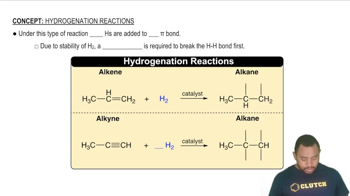Textbook Question
Determine the kinds of intermolecular forces that are present in each element or compound. d. N2
 Verified step by step guidance
Verified step by step guidance



Determine the kinds of intermolecular forces that are present in each element or compound. d. N2
In each pair of compounds, pick the one with the higher boiling point. Explain your reasoning. c. CH3OCH3 or CH3CH3OH
In each pair of compounds, pick the one with the higher vapor pressure at a given temperature. Explain your reasoning. a. CH4 or CH3Cl c. CH3OH or H2CO
In each pair of compounds, pick the one with the higher vapor pressure at a given temperature. Explain your reasoning. b. CH3CH2CH2OH or CH3OH